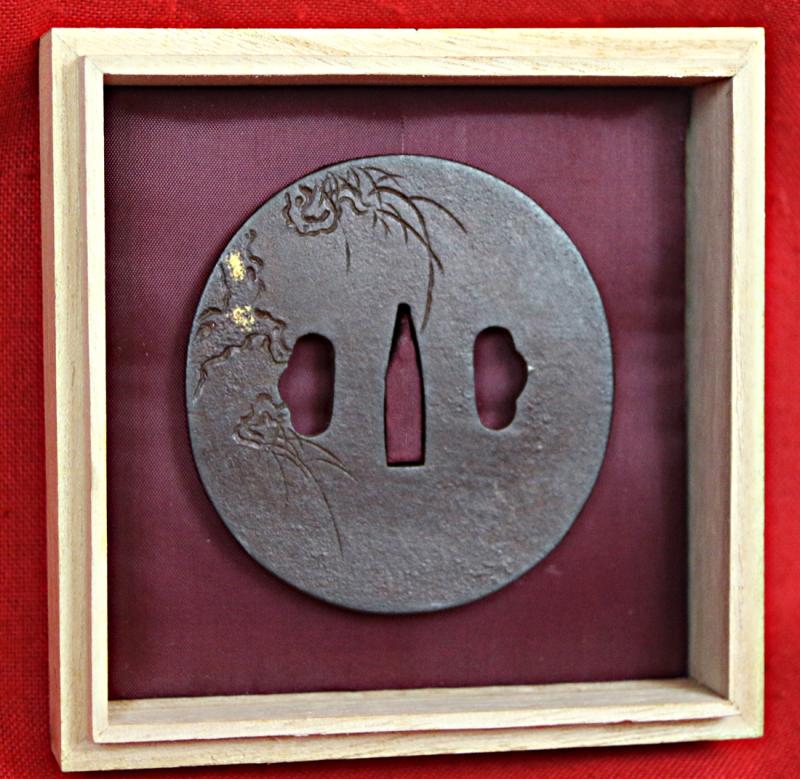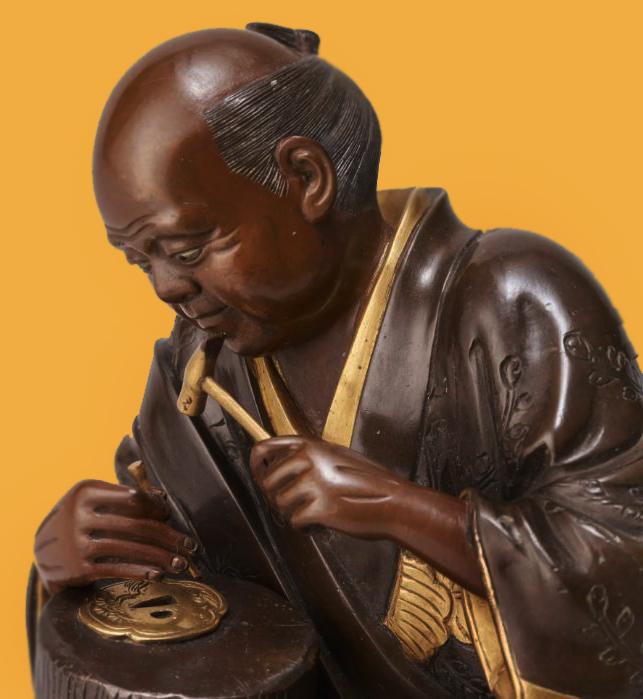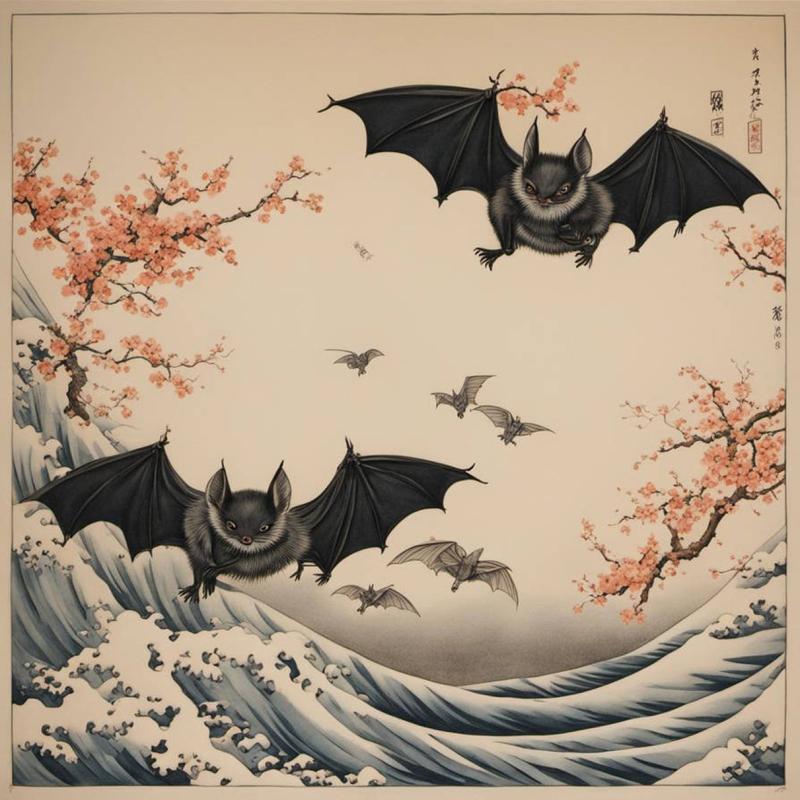A Beautiful & Stunning Edo Period Tetsu Round Tsuba Of a Bat Flying in Rain Over Turbulant Seas.
The reverse is a willow carved in sunken relief, all upon a russet ground. somewhat reminiscent of the work my master Kenzui,
In Japanese folklore, bats are often associated with good luck and prosperity. One popular folktale is the story of "Bakeneko," a mythical creature resembling a cat with bat-like features. Bakeneko is believed to bring blessings and protection to households, particularly during times of hardship.
In the context of kimono designs, the depiction of bats holds specific symbolism. Bats are often featured alongside other auspicious motifs such as the pine, bamboo, and plum—traditional symbols of longevity, resilience, and prosperity. When bats are included in these designs, they reinforce the notion of good fortune and longevity, making them popular motifs for celebratory occasions such as weddings and New Year's festivities.
During the Meiji period (1868-1912), Japan underwent significant cultural and societal transformations. Bats continued to be prominent symbols during this era, often depicted in art and textiles as representations of prosperity and modernisation. As Japan embraced Western influences and embarked on industrialisation, the symbolism of bats evolved to reflect aspirations for economic growth and social advancement. Bats were frequently incorporated into decorative arts, such as ceramics and textiles, to convey wishes for prosperity and success in the changing landscape of Meiji Japan.
72mm
Code: 25480
895.00 GBP




